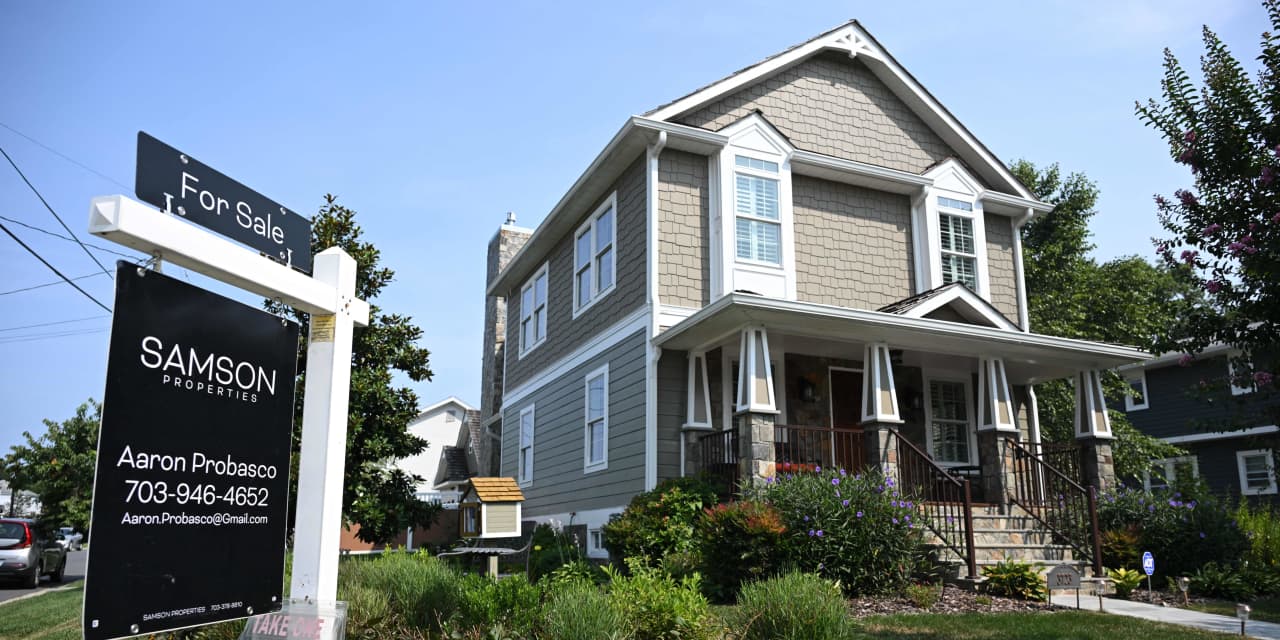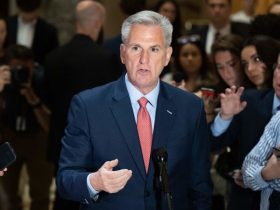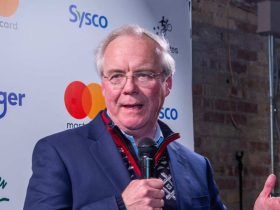Mortgage rates climbed to 7.49% this week, leaving them on course to potentially hit 8% by the end of the month. That would add to the pressure on the housing market, a critical element of the economy.
This week’s average 30-year fixed rate climbed 0.18 percentage point from the week prior, representing the greatest increase since the gain of 0.22 point reported on June 1. It was the highest rate since late 2000, according to the government-sponsored enterprise.
The rates, measured weekly by
Freddie Mac,
have increased by more than a full percentage point since the final reading in 2022. Many of the gains have come in the second half of the summer and early fall as yields have risen on longer-dated Treasury debt.
“Several factors, including shifts in inflation, the job market and uncertainty around the Federal Reserve’s next move, are contributing to the highest mortgage rates in a generation,” Freddie Mac chief economist Sam Khater said in a statement. “Unsurprisingly, this is pulling back homebuyer demand.”
The recent increases bring mortgage rates closer to 8%—a level rates could hit soon, Lawrence Yun, the National Association of Realtors’ chief economist, told Barron’s.
“The 30-year fixed mortgage rate could reach 8% later this month,” Yun said Wednesday, adding that rates could stay at that level for the rest of the year. “Mortgage rates will stop rising and start falling only if the Fed indicates likely rate cuts next year.”
The surge in Treasury yields, which effectively set the cost of mortgages, make an 8% rate look increasingly likely. Borrowing costs that high could drive home sales to the lowest level in more than a decade as both buyers and sellers pull back.
The 10-year Treasury yield rose to its highest level since 2007 earlier this week, according to Dow Jones Market Data. Yields have been driven up in recent weeks by a combination of factors, including political upheaval in Congress and the Federal Reserve’s suggestion its target for the fed-funds rate would remain higher for longer.
At 8%, rates would reach their highest level since August 2000, according to Freddie Mac data. That is high compared with recent years, but, as anyone who bought a home in the 1980s or 1990s will tell you, an 8% mortgage rate is far from staggering historically. Mortgage rates measured by Freddie Mac reached as high as 18.6% in 1981.
But the recent gain comes at a particularly sensitive time in the housing market. Existing-home prices nationally are once again approaching the all-time highs they notched in 2022. Relatively few existing homes are for sale because homeowners who locked in historically low rates in the pandemic’s early years have little incentive to swap their 3% rates for a 7% loan.
The cost of buying, meanwhile, has risen. Buying a home in the third quarter would cost the average earner 35% of their wages, according to a September report by Attom Data—the largest share since 2007.
The combination of a short supply of homes for sale and affordability constraints pushing more buyers to the sidelines has resulted in existing homes being sold at a seasonally-adjusted annual rate of 4.04 million. That is already nearly 22% lower than the level of sales in August 2000, the last time mortgage rates topped 8%.
Rising mortgage rates could drive existing-home sales, which have already buckled under this year’s higher rates, below January’s cyclical low, Yun has said. The seasonally adjusted annual rate of existing-home sales in August was only 1% higher than January’s rate of four million, the lowest reading in nearly 13 years, the trade group’s data show. Should sales drop below four million in coming months, it would be the lowest seasonally-adjusted rate since 2010, when home sales were bottoming in the wake of the housing market crash.
Yun has told Barron’s that every one percentage point increase in mortgage rates prices an additional three million potential buyers out of the housing market. Since not every buyer who would qualify for a mortgage ultimately buys a home, such an increase in rates would result in about 250,000 to 300,000 fewer home sales on an annualized basis.
Higher rates wouldn’t only affect buyers. They would also worse the scarcity of previously owned homes for sale, said Keith Gumbinger, vice president of mortgage website HSH.com.
That could help support new home sales—with limits, Gumbinger said. Builder ability to drive sales through the use of incentives, such as mortgage rate buydowns, gets more difficult as rates get higher.
“Potential borrowers would likely have rather more difficulty qualifying at 8%, and offering them a temporary 2% break on the rate still leaves it at 6%, rather high compared with not long ago,” Gumbinger said.
Builders have had healthy profit margins recently, allowing them to drum up demand by offering incentives and mortgage rate buy-downs, said Cristian deRitis, deputy chief economist for Moody’s Analytics. “They do have some room to manage and offset some of these higher interest rates, but they don’t have infinite resources,” the economist said.
The potential impact on home prices is harder to determine. Low supply and low demand are engaged in a tug of war, deRitis said. On one side is low supply, spurred by homeowners opting to stay put, and on the other is low demand, with buyers being priced out of the market. Right now, the low level of homes for sale is winning.
“Lower supply is really constricting the market, but you still have enough buyers out there willing to come forward and prop up prices,” deRitis said.
That might not remain the case. “The low level of affordability is going to cause house prices to flatten, if not decline modestly,” deRitis said.
Write to Shaina Mishkin at shaina.mishkin@dowjones.com
Read the full article here













Leave a Reply